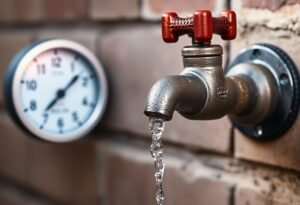Why Hydrangeas Need Proper Watering
Hydrangeas, known for their lush growth and vibrant colors, are plants that require special attention to moisture levels. Improper watering can lead to wilting or susceptibility to fungal diseases. Too little water causes leaves to yellow and flowers to droop, while too much can drown roots, leading to decay. Thus, finding the perfect balance is essential.
How Often to Water Hydrangeas
It is recommended to water hydrangeas every few days, especially on hot days or if they are planted in sunlight. Maintaining consistency in watering is key until the plants are well-rooted and can manage moisture on their own. Check soil moisture with your finger; if the top layer is dry, it’s time to water.
Watering Young vs. Mature Hydrangeas
Young hydrangeas require a slightly different approach to watering. During their first year, they need regular watering to establish their roots well. On the other hand, mature plants are generally more resilient to changes in moisture. However, they shouldn’t be neglected; during extended dry spells, even seasoned hydrangeas will need extra care.
Best Times for Watering Hydrangeas
Avoid watering hydrangeas in direct sunlight, as this can lead to rapid evaporation. The best times to water are early morning or late evening. This allows water to penetrate the soil rather than disappearing into the air. Doing this ensures your plants have the time to absorb the essential nutrients.
Soil Type’s Impact on Watering
The soil in which you plant hydrangeas greatly affects their health and blooming. The soil should be well-draining, rich in nutrients, and capable of retaining moisture. Sandy soil will require more frequent watering, while clay soil may hold water longer. Use appropriate fertilizers to improve soil structure.
Signs That Hydrangeas Need Water
Keep an eye on your plants to notice their needs. Yellowing leaves, drooping flowers, and wilted stems are signs that your hydrangeas desperately need watering. Additionally, if the soil is dry a few inches down, it’s time to water.
What Are the Best Watering Methods?
One of the most effective methods for watering hydrangeas is drip irrigation. This allows you to deliver water directly to the plant’s roots while minimizing evaporation. Also, use pots with large drainage holes to prevent water stagnation, essential for maintaining your hydrangeas’ health.
Conclusion
Proper watering of hydrangeas is a skill that requires care and dedication. Remember, only the right amount of water will allow your plants to blossom into their full beauty. Maintain a regular watering schedule and observe their needs. A garden full of hydrangeas is a true work of art!
Disclaimer
The above tips are for informational purposes only and do not replace professional gardening advice.

















